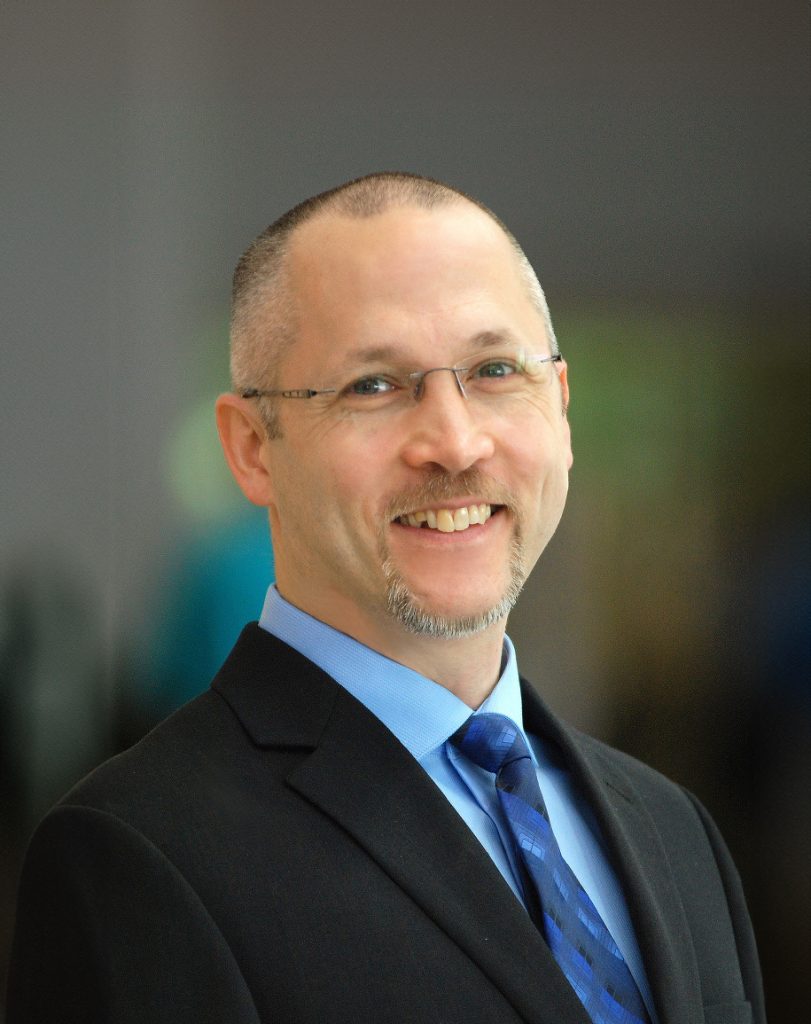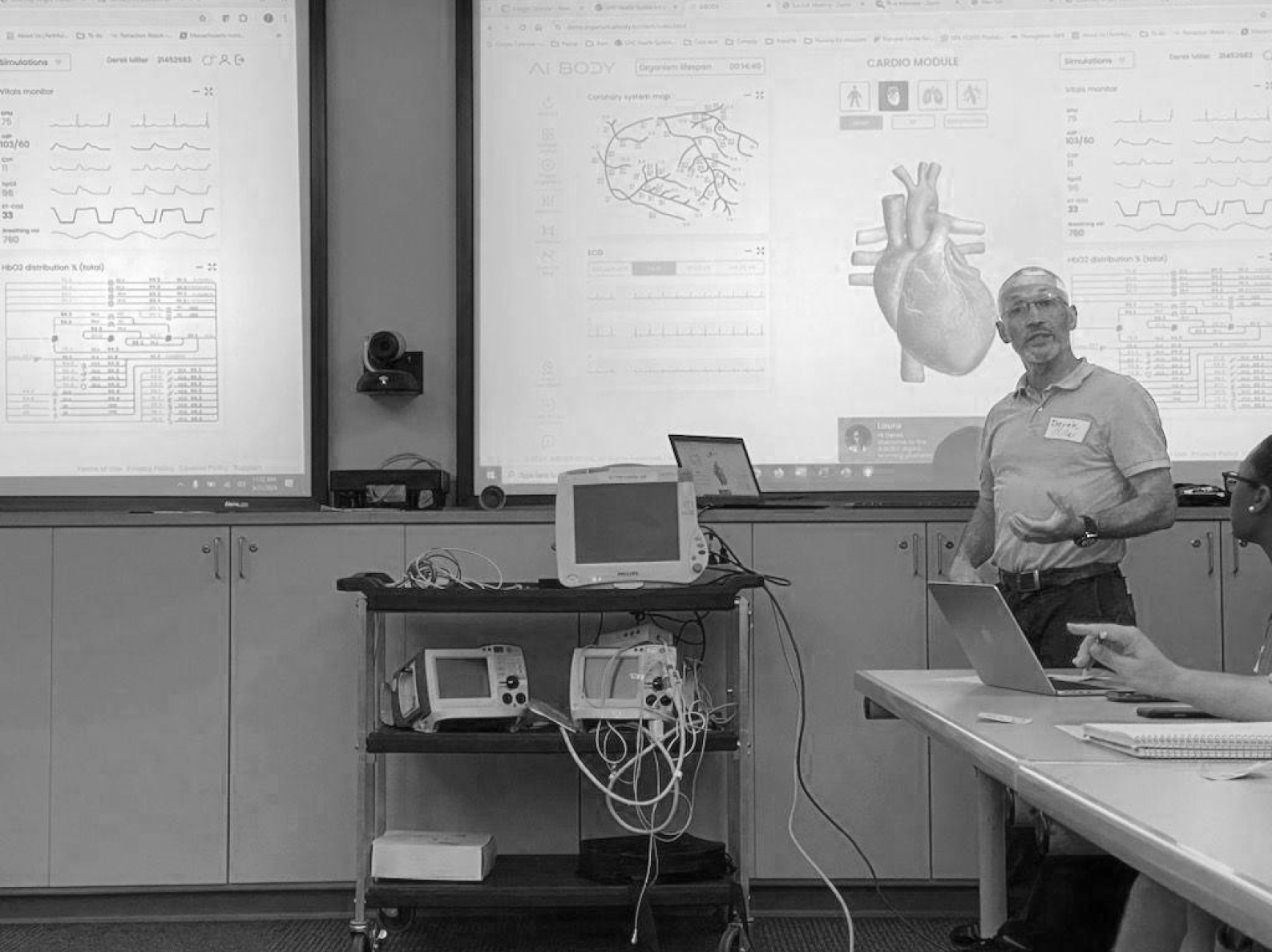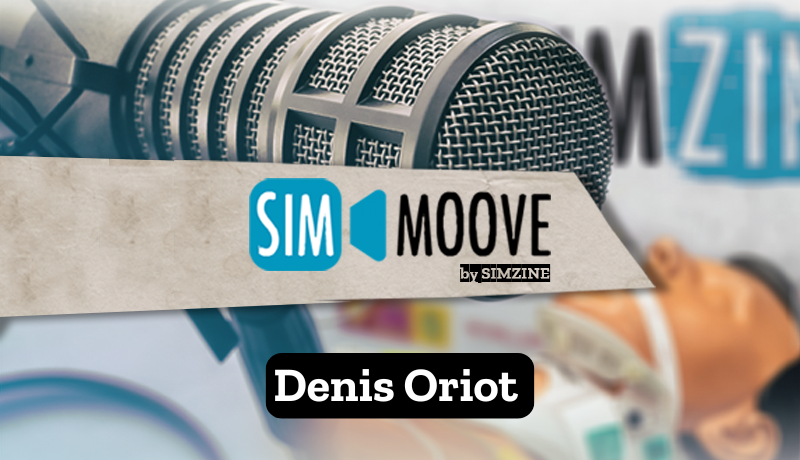Healthcare education is entering a new era, driven by cutting-edge digital simulations that enhance both teaching and learning. By simplifying complex physiological concepts and boosting student engagement, tools like AIBODY are transforming the way future professionals develop practical skills and critical thinking, bridging the gap between theory and real-world application.
In the classroom today
In a packed lecture hall, 100 medical students watch as a digital patient comes to life on the big screen. The professor adjusts a few parameters, and instantly, the virtual liver responds to a simulated medication, showing subtle changes in enzyme levels. The students aren’t just observing, they’re engaging, each on their own devices, adjusting variables and seeing how the body reacts in real time. This isn’t just theory anymore; it’s hands-on learning, powered by physiological modeling, bringing complex biomedical concepts into clear focus for everyone at once.
Physiological Simulation in Enhancing Learning Physiology
In the rapidly evolving world of healthcare, digital simulations of human physiology offer transformative learning solutions, bridging the gap between theory and practice. New advances in the digital simulation of human physiology enhance the understanding of complex physiological concepts, making education more interactive and impactful for future professionals. Physiological modeling involves creating mathematical representations that mimic the complex behaviors of biomedical organs and systems. This area of biomedical engineering seeks to enhance our understanding of how key components of the human body—such as genes, proteins, cells, organs, and systems—interact across different scales. It also provides a means to measure and predict how these interactions shift in response to diseases or treatments. Today we even talk about the so-called Organ-on-a-chip technology, which replicates the physiological environment and functions of human organs on a small chip with high precision, accurately mimicking organ-level physiology and disease conditions (Deng et al. 2023).
A real example
Derek Miller, MSN, RN, CBRN, CCRN, Nurse Education Specialist at the North Carolina Jaycee Burn Center and an adjunct faculty member at the University of North Carolina School of Nursing, has spent much of his teaching career at the forefront of integrating advanced technologies into healthcare education. Most recently, Derek participated in a multiphase pilot using the AIBODY learning platform and simulations with his nursing students who were learning the basics of critical care for acutely ill and injured patients. After years of experimenting with various tools to improve his teaching methods, Derek discovered that this approach not only simplified the teaching of complex concepts but also transformed his entire outlook on education.

Pilot Phase 1: Enhancing Didactic Lectures with Real-Time Simulations
During the initial pilot phase, Derek incorporated simulation and the accompanying high-fidelity visualizations into his didactic lectures, focusing on myocardial ischemia, the pathophysiology of coronary artery occlusion and the corresponding changes to the electrocardiogram. The real-time simulations allowed students to visually grasp the progression of ischemia and its impact on cardiac function. This dynamic learning experience enabled students to make immediate connections between physiological changes and their manifestations on the ECG, significantly enhancing their understanding of a complex topic.
Pilot Phase 2: Small Group Simulations for Intensive Learning
Building on the success of the didactic lectures, the second pilot phase involved small group simulations that provided a deep dive into the nursing process for conducting a primary survey of an acutely injured patient. Simulations presented real-time scenarios where students could apply theoretical knowledge to practical situations. Derek observed exponential engagement during these sessions, with students demonstrating a much higher level of participation and critical thinking compared to other lab experiences. The interactive nature of these sessions allowed students to explore the nuances of patient care, reinforcing their understanding and application of the nursing process.
Pilot Phase 3: Independent Learning through Asynchronous Simulations
The final phase of the pilot introduced an independent asynchronous simulation experience, again focusing on the primary survey for an acutely injured patient. Students were presented with custom scenarios they could freely explore via the simulation. Their work required minimal technical support or educator intervention, fostering a sense of learner autonomy. Upon completion, students received real-time feedback through detailed reports, allowing them to reflect on their performance and identify areas for improvement. This phase highlighted the effectiveness of self-directed learning while maintaining a high standard of educational rigor.
Learning Physiology with Purpose-Built Innovation
AIBODY is designed from the ground up to provide vivid, real-time simulations of physiological processes. It enables educators to illustrate complex topics such as cardiovascular and respiratory physiology with unprecedented clarity. Derek explains, “In my teaching, I emphasize effective clinical practice through the interconnectedness and nuanced complexity of the human body. These advances in simulation allow for a powerful, visually immersive tool to help learners connect cellular and tissue changes with rapid changes in patient conditions.”
With AIBODY, Derek is able to demonstrate healthy organ function, the impact of disease and injury, and the effects of various treatment options. Its interactive, visual approach has dramatically improved his students’ understanding and retention of complex physiological concepts.
AI and User-Friendly Tools in Physiological Simulation for Learning Physiology
Large Language Model (LLM) artificial intelligence further enhances educational impact in this solution. The platform interacts directly with students’ inquiries, adjusting visualizations in real-time to create a dynamic, responsive learning environment. “This unparalleled level of experiential learning bridges the gap between the interdisciplinary study of physiology and the development of critical thinking skills,” says Derek.
The provision of user-friendly “natural language” controls mean that educators and students alike can use it without needing extensive technical training. This ease of use, combined with cloud-based delivery, allows students to access their course content anytime, anywhere, enabling unlimited opportunities for independent learning.
Transforming the Learning Experience with a Physiology Simulation Software
Derek’s students responded enthusiastically, with a Net Promoter Score (NPS) of 75, which is considered excellent. Feedback highlighted the innovative, interactive, and educational qualities of the approach. One student remarked, “It’s much better than other simulations I’ve used—much more interactive and user-friendly.” Derek’s experience illustrates the platform’s potential to revolutionize healthcare education. “This pilot has truly transformed the learning experience,” he says. “It has brought learning to life in a way that I’ve never seen before.”
Conclusions: Advancing Healthcare Education with Physiological Simulation
Physiological simulation is changing the way healthcare professionals are trained, turning abstract concepts into interactive, real-world applications. With AI-driven platforms like AIBODY and user-friendly features, students can dive deeper into complex physiological topics, making learning both more engaging and intuitive. Derek Miller’s experience highlights how this method not only enhances comprehension but also encourages students to take ownership of their learning. As these tools become more accessible, they hold the potential to significantly enrich healthcare education, making it more practical and impactful for the next generation of professionals. Simulation Centre in Nuoro have proven to be safe and realistic for training, improving the simulation of invasive procedures and reinforcing the specific skills of operators. Moreover, the diversity of manageable tasks, including venipuncture, vascular device installation and other clinical practices, confirms the versatility of these tools.
REFERENCES
Deng S, Li C, Cao J, Cui Z, Du J, Fu Z, Yang H, Chen P. Organ-on-a-chip meets artificial intelligence in drug evaluation. Theranostics. 2023 Aug 15;13(13):4526-4558.
READ ALSO







































